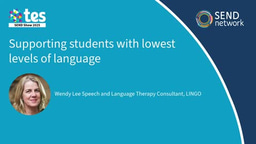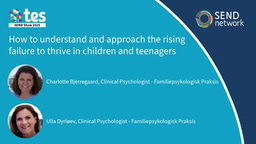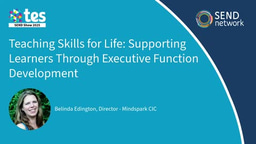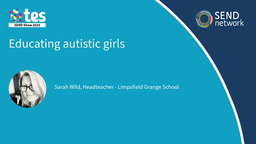Factors behind the rise in Autism - a holistic exploration

Introduction
Why does the incidence of Autism Spectrum Disorder (ASD) appear to be steadily rising? The reason for this article is to bring together the many answers given in response to this question, assess the implications of current research findings and to shine a light on what is yet to be explored. The emotional response that this subject often ignites puts it at risk of becoming more of a political question than a scientific one. By focusing our attention on a holistic appraisal of the social, educational and health context in which Autism has become increasingly prominent, the purpose of this review is to consolidate our current understanding and promote open minded future lines of inquiry.
What is the reported global prevalence?
The reported global prevalence of ASD has been steadily increasing. This is reflected in data from independent nationwide studies and was confirmed in a research study of national trends in five different Scandinavian and Nordic countries (de López KM & Møller , 2024). Over the past 23 years, US child estimates of the prevalence of ASD have risen incrementally from 0.66% (2002), 1.13% (2008), 1.85% (2016), to 2.27% in 2018 (CDC, 2025; Shaw et al., 2025). The recorded prevalence increased from 1 in 150 in 2000, to 1 in 31 in 2022 and the upward trend appears to be increasing (CDC, 2025).
It recognised that this notable increase is at least partly due to a rise in public awareness of neurodevelopmental disorders in general, and to the changing criteria used for diagnoses over time (Shaw et al., 2025).
The effect of evolving diagnostic criteria
Over recent decades, this has impacted our overall perception that Autism is now a far more pervasive condition than it ever used to be. From originally being described as a form of childhood schizophrenia and the result of cold parenting in 1960s, Autistic Spectrum Disorders became recognised as a set of related developmental disorders, and finally as a spectrum condition with wide-ranging degrees of impairment. Diagnostic criteria from the Diagnostic and Statistical Manual of Mental Disorders (DSM-III) were revised in 1987 and significantly broadened the concept of autism by including the milder diagnosis of Pervasive Developmental Disorder - not otherwise specified (PDD-NOS) — and dropped a previous requirement for demonstrating onset before 30 months. The DSM-IV, released in 1994 and revised in 2000, was the first edition to categorize autism as a spectrum when ‘Asperger’s disorder,’ was added also at the mild end of the spectrum (Zeldovich, 2018).
The DSM-5 was introduced in 2013 and used until 2022 and was the most widely agreed. From then on the Internationally agreed Classification of Diseases ICD-11 did not vary significantly from the DSM-5 except to distinguish between those with and without cognitive impairment (Greaves-Lord, et al., 2022). The Centers for Diseases control and prevention, (CDC) reported 1 in 44 in 2018, 1 in 36 in 2020, 1 in 31 in 2022 children identified as autistic, representing significant increases (CDC, 2025). However, even estimates that account for diagnostic changes still leave an apparent increase that cannot be explained by genetics alone, given no single ASD gene can account for more than 1% of ASD since the etiology of ASD involves hundreds of genes interacting with environmental factors (La Salle, 2023).
Public perception is important but so is our critical understanding of what is driving that perception. The key question is whether a rise in the condition itself is leading the demand for diagnosis and resources, or the need for diagnosis and resources is leading to a greater recognition of the condition. What is clear is that if much needed resources are severely restricted or unavailable, parents of children, and medical professionals who recognise the urgency of that need, will try to do whatever is necessary to ensure that they are met as far as possible.
Social awareness may increase the chatter about Autism and of general public perception but does not account for the eventual medical diagnosis that often involves a long, hard if not painful process to come by. It has to be remembered also that concerns about an unaccountable rise in rates of Autism is not the preserve of the 2020s but has continued for some decades. Health care professionals were beginning to discuss concerns in the 1990s before there was any significant knowledge of the condition amongst the general public or it infiltrated media discourse (Blaxill, 2004).
Whether the assessment involves intellectual and social or only social and communication related impairments, the difficulties encountered along the route to diagnosis represents for many a bias against, rather than for, a formal diagnosis being made as soon as possible at an early stage. A substantial portion of children with ASD remain undiagnosed until they reach the secondary education stage and experience a lengthy wait for appropriate provision (Russell, 2021). Many struggle with extreme mental impairments, including severe language impairments, others have intellectual abilities alongside other types of intellectual disabilities, as well as severe social-interaction difficulties common to Autism, sometimes referred to as ‘twice exceptional,’ (Gierczyk & Hornby, 2021). Despite the commonly experienced delay in the process towards diagnosis, such evidence of Autism is often clearly observed by parents, health-care or educational professionals at an early infant or pre-school stage. This implies that the actual incidence may be yet higher than that reported.
Unaddressed need creates further demand
Parents have learned that even where there is an acknowledgement of the need for SEND support, unless they have a diagnosis of Autism, and confirmation of it within an EHCP, there is little guarantee of any additional provision (Watts, 2023). ‘Autism’ is the category of SEND that attracts the highest level of acknowledgement and number of EHCPs in the UK despite not representing the highest percentage of incidence of SEND (DfE 20 June, 2024). Hence, with this statutory document, parents have greater protection of the child’s support than those without it. The demand for an Autism diagnosis will therefore act as a contributory factor to the noise perception of increased prevalence but still does not account for the rise itself.
Delay in diagnosis is often to do with pressure on the education and health systems to fund support or provide appropriate provision. This in turn impacts both on their behaviours and puts a stress on school staff to support them to make behaviour improvement or academic progress. This pressure on limited resources can lead to many questioning the value of diagnosis. The use of a single overarching term to describe a wide range of needs, has compounded the perception that the diagnosis is being too liberally applied. For example, high functioning intellectually able children have been understood by many in the same way as those with little or no speech and severe intellectual impairment. Whilst Autism awareness has led to greater understanding of a common range of underlying social interaction difficulties, it has raised resentment and confusion about which children are deserving of the funding and support available for provision within education settings.
Understanding of social impairments for both those with and without intellectual impairments can be critical to helping a child reach their own potential and feeling successful in school but it has made claiming appropriately for each child’s level of need more complex. Withholding or delaying a diagnosis however rarely improves outcomes for the children concerned.
There is, therefore, inherent tension between those whose needs require better attention and those who fear being overwhelmed by what appears to be an unending demand on government funding and limited school resources. Whilst wariness about over diagnosis is a common public concern, professional bodies such as the Autistic Society are concerned that a bias away from diagnosis leaves many undiagnosed, in much need of essential support, (O’Nions et al., 2023; NAS, 23 Jan 2023).
Therefore, where necessary support, or appropriate specialist provision for children with ASD is in short supply, and is contingent on receiving a diagnosis, the demand for a diagnosis has become a more pressing one. Questions have been asked about whether this has led to a cultural or ‘cult’ movement towards a modern-day search for a neuro-diverse identity (Clements, discussions 13 May, 2025). This makes it essential to take into account social and educational contexts in which such diagnostic numbers have increased. Nonetheless questions remain as to background reasons for this rise in concern. The purpose of this review is to assess all possible factors for this and to open up the debate to greater levels of scrutiny.
Co-morbidity with other disorders and mental ill health
In addition to the widening criteria for diagnosis there has been a growing awareness of co-morbid conditions, such as ADHD and notably, Developmental Trauma disorders (Van der Kolk, 2014). In addition, there has been a considerably higher rate of diagnosis of previously unacknowledged symptoms in girls (Harop et al., 2024).
Mental health difficulties are intrinsically connected to Autism so with the recent rapid rise in Social Emotional and Mental Health disorders, it is unsurprising that this should further raise a perceived increase in rates of Autism (Fonagy, 2025). Commonly recognised features of Autism such as social dysfunction, communication difficulties, difficulties with seeing the world from another person’s point of view (theory of mind) and hyper focus on specific areas of interest, can also manifest themselves through mental health disorders as well as other neurological disorders such as ADHD. Without a formal diagnosis, Autism may be casually attributed to the reason for such behaviours. In addition the damage caused to undiagnosed Autistic children who have experienced trauma and neglect make them particularly vulnerable to severe mental ill health. These issues make it all the more essential that rates of Autism are understood with respect to rigorous and early specialist paediatric/psychological diagnosis.
The impact of trauma as a result of disrupted attachment through neglect, emotional and or sexual abuse is more prevalent than commonly perceived and frequently leads to anti-social behaviour in schools. In the absence of thorough diagnosis, the presentation can understandably lead staff to make an Autism referral. If undetected or inappropriately managed, school responses to a child’s needs can compound trauma and further aggravate behavioural difficulties. However, in the absence of the availability of timely diagnoses, it can be very difficult for professional teachers and school leadership teams to distinguish between the root causes of such behaviours that can be so easily confused with Autism (Van der Kolk, 2014).
Despite the rise in pressure on services, this underscores the importance of continuing to strengthen, rather than restrict the diagnostic process and our understanding of the reasons for the evident rise in all areas of related neurodivergent disorders.
Understandably, a recent series of five BBC radio podcasts picked up on this sense of public concern. The series was devoted to discussing some of the questions about what and why the rise in Autism pervades our society (BBC The Autism Curve, May 2025; NAS, 2023). Can we rely on current research evidence to fully explain this or do we need to learn more? ‘Why?’ has become a debate affecting almost everyone in our society at a time when Special Educational Needs and Disabilities (SEND) and the proportion of the Government’s education budget spent on it, is becoming increasingly politicized issue (Sibieta & Snape. IFS, 2024).
Whether or not, it can be proved definitively that actual prevalence has increased, an urgent sense of curiosity about possible contributory factors is essential. ASD has a complex etiology involving both hereditary and environmental factors. A number of recent research studies have shown that certain environmental factors can impair the proper development of the brain and nervous system through the gut and immune system, all of which have been found to be interrelated (Min Zou, et al., 2025).
It is of concern that some of these issues are known to have a greater impact on poorer sections of society and racial minority groups (Roman-Urrestarazu, 2021). This indicates how essential it is that no stone should be left unturned if there is any suspicion at all that certain environmental factors in modern day living, are putting at risk the healthy development of our most vulnerable children and future generations.
Answers can only be found if we are genuinely open to the full range of possible scientific exploration and evidence without bias or prejudice. It is of great concern to those who genuinely wish to find answers about how society can best support vulnerable children and adults, that these questions are addressed with an open mind in whatever direction research may lead us.
Coming up
In Part 2 of this article, I consider the implications of the link current research makes between the gut microbiota, the nervous system and neurological development with reference to the rise in ASD.
In Part 3, I will reflect on research into various environmental factors impacting neurological development. I weigh up how hereditary and environmental factors may be interacting to impact disproportionately on disadvantaged socioeconomic groups.
….………………………………………………………………………………………………………………………………..
References:
- BBC. The Autism Curve, May 2025. The Autism Curve. 4. The Identity.
- Blaxill, F., (2004). ‘What's going on? The question of time trends in autism.’ Public Health Reports. Vol 11.Nov-Dec, 2004;119(6):536–551. doi: 10.1016/j.phr.2004.09.003
- CDC (2025).
- Clements, David. (Tuesday, 13 May, 2025. 7 - 8:30 pm, Bedford Sq, London). ‘Cure or cult? Special educational needs in the classroom’.
- Fonagy, P. (27 Jan. 2025). ‘Understanding the crisis in young people’s mental health.’ The Health Foundation.
- Gierczyk, M. & Hornby, G. (2021). Twice-exceptional students: Review of implications for special and inclusive education. Education Sciences, 11, 85.
- Greaves-Lord, K., Skuse, D., and Mandy W. (2022). ‘Innovations of the ICD-11 in the Field of Autism Spectrum Disorder: A Psychological Approach.’
- Clin Psychol Eur. 2022 Dec 15;4(Spec Issue):e10005. doi: 10.32872/cpe.10005
- Harop et al., 2024. ‘Are the diagnostic rates of autistic females increasing? An examination of state-wide trends.’J Child Psychol Psychiatry. 2024 Jul;65(7):973-983. doi: 10.1111/jcpp.13939. Epub 2024 Jan 5.
- LaSalle, J. M. (2023). Epigenomic signatures reveal mechanistic clues and predictive markers for autism spectrum disorder. Mol Psychiatry 28, 1890–1901 (2023). https://doi.org/10.1038/s41380-022-01917-9
- Lopez, Jensen de, K.M. Thirup Møller, H. (2024). ‘Prevalence of Autism in Scandinavian Countries (Denmark, Norway, Sweden), and Nordic Countries (Finland, Iceland, the Faroe Islands, and Greenland).’ Neuropsychiatr Dis Treat. 2024 Aug 19;20:1597-1612. doi: 10.2147/NDT.S466081.
- Min Zou et al., (2025). Intervention and research progress of gut microbiota-immune-nervous system in autism spectrum disorders among students. Front Microbiol. 2025 Mar 12:16:1535455. DOI: 10.3389/fmicb.2025.1535455
- NAS National Autistic Society. (23 Jan, 2023). ‘A Constant Fight report launch’
- O’Neans, et al., (2023). ‘Autism in England: assessing under diagnosis in a population based cohort study of prospectively collected primary care data’. Online 3 April 2023. The Lancet Regional Health-Europe 2023;29: 100626. https://doi.org/10. 1016/j.lanepe.2023. 100626
- Roman-Urrestarazu A, van Kessel R, Allison C, Matthews FE, Brayne C, Baron-Cohen S. (2021), Association of Race/Ethnicity and Social Disadvantage With Autism Prevalence in 7 Million School Children in England. JAMA Pediatr. 2021 Jun 1;175(6):e210054. doi: 10.1001/jamapediatrics.2021.0054.
- Russell, G. et al., (2021). ‘Time trends in autism diagnosis over 20 years: a UK population-based cohort study’ (19 August 2021). https://doi.org/10.1111/jcpp.13505
- Shaw et al., (2025). Prevalence and Early Identification of Autism Spectrum Disorder Among Children Aged 4 and 8 Years — Autism and Developmental Disabilities Monitoring Network.
- Surveillance Summaries / April 17, 2025 / 74(2);1–22
- Sibieta, L. and Snape, D. (10 Dec. 2024). IFS Report. Education spending Spending on special educational needs in England: something has to change
- Van der Kolk, (2014)Van der Kolk, 2014. The Body Keeps the Score. Penguin Books. Penguin UK.ISBN: 978-0-141-97861-1
- Watts, R. (February 22, 2023). ‘Nowhere to go: The lack of provision for young people with complex needs’. Special Needs Jungle.





Please sign in or register for FREE
If you are a registered user on SEND Network, please sign in
Thanks Michael. Do let me know if you have any questions about this. I suspect more will be provoked by Part 2 of this paper which tackles a number of research issues related to ASD and diet. I very much look forward to discussions about that with you.
@Michael O'Dwyer